Emerging challenges in the health systems of Kerala, India: qualitative analysis of literature reviews
Journal of Health Research
ISSN : 2586-940X
Article publication date: 12 February 2021
Issue publication date: 11 February 2022
The substantial increase in non-communicable diseases (NCDs) is considered a major threat to developing countries. According to various international organizations and researchers, Kerala is reputed to have the best health system in India. However, many economists and health-care experts have discussed the risks embedded in the asymmetrical developmental pattern of the state, considering its high health-care and human development index and low economic growth. This study, a scoping review, aims to explore four major health economic issues related to the Kerala health system.

Design/methodology/approach
A systematic review of the literature was performed using PRISMA to facilitate selection, sampling and analysis. Qualitative data were collected for thematic content analysis.
Chronic diseases in a significant proportion of the population, low compliance with emergency medical systems, high health-care costs and poor health insurance coverage were observed in the Kerala community.
Research limitations/implications
The present study was undertaken to determine the scope for future research on Kerala's health system. Based on the study findings, a structured health economic survey is being conducted and is scheduled to be completed by 2021. In addition, the scope for future research on Kerala's health system includes: (1) research on pathways to address root causes of NCDs in the state, (2) determine socio-economic and health system factors that shape health-seeking behavior of the Kerala community, (3) evaluation of regional differences in health system performance within the state, (4) causes of high out-of-pocket expenditure within the state.
Originality/value
Given the internationally recognized standard of Kerala's vital statistics and health system, this review paper highlights some of the challenges encountered to elicit future research that contributes to the continuous development of health systems in Kerala.
- Kerala health system
- Kerala health insurance
- Kerala public health
- Heart disease
- Health economics
- Emergency healthcare
Muraleedharan, M. and Chandak, A.O. (2022), "Emerging challenges in the health systems of Kerala, India: qualitative analysis of literature reviews", Journal of Health Research , Vol. 36 No. 2, pp. 242-254. https://doi.org/10.1108/JHR-04-2020-0091
Emerald Publishing Limited
Copyright © 2021, Manesh Muraleedharan and Alaka Omprakash Chandak
Published in Journal of Health Research . Published by Emerald Publishing Limited. This article is published under the Creative Commons Attribution (CC BY 4.0) licence. Anyone may reproduce, distribute, translate and create derivative works of this article (for both commercial and non-commercial purposes), subject to full attribution to the original publication and authors. The full terms of this licence may be seen at http://creativecommons.org/licences/by/4.0/legalcode
Introduction
In India, health care follows a decentralized approach in which implementing and executing health facilities is the responsibility of each state, with considerable overlook from the central government. Health-care financing and policymaking are the responsibilities of the central government, whereas implementing the policy is the responsibility of the state government [ 1–3 ]. The national health policy established in 1983 was the first initiative toward implementing a structured health-care system and introducing various national health programs in the country. Records indicate that because of the decentralization and health care being a state's responsibility, a considerable disparity can be observed in the health-care delivery standards among different states; some states are still struggling, whereas others display enormous improvements [ 4 ].
Kerala has a gross domestic product (GDP) per capita of US$3,200 and is classified as a lower-middle-income state. Kerala is well known for maintaining one of the best health-care systems in the country for decades [ 5 ]. The “Kerala model of development” became a widely used term after the survey conducted by the Center for Developmental Studies on poverty and unemployment in 1975. According to experts, irrespective of its low per capita income, Kerala's health system has excelled and continuously garnered national and international attention. As stated by various health surveys, including the central government's analysis reports, Kerala leads many other states in having high health-care standards and life expectancy rates, low maternal mortality rate and the lowest infant mortality rate in the country ( Table 1 ). High literacy rates and women empowerment have contributed significantly toward this achievement. However, numerous past experiences and studies indicate that Kerala is in the era of an emerging puzzle because of its high morbidity rate with low mortality rate, besides having a significant increase in non-communicable diseases (NCDs) [ 3, 6–11 ].
This unique community has taken enormous steps to reduce mortality by implementing robust primary care facilities, resulting in a significant increase in chronic degenerative diseases among the middle-aged and adult population [ 12, 13 ]. A significant proportion of adults in Kerala are living with chronic morbidities, especially illnesses such as hypertension, diabetes and atherosclerosis, which are known to develop chronic complications such as heart failure and kidney diseases [ 9, 11, 14 ]. Moreover, previous studies state that the approach of the Kerala population toward seeking timely emergency medical attention was questionable [ 8, 9, 15 ]. Golden hour treatment is the most effective option during the acute phase of a stroke or coronary event and is possible only during the early hours of these illnesses. Golden hour treatment protocols are advised by medical authorities such as the American Heart Association and American Stroke Association. The golden hour is 4 h 30 min for an acute stroke and 6 h for an acute coronary event [ 16 ]. Delayed treatment or consultation for acute coronary syndrome or a stroke may lead to mortality or a high incidence of disability [ 8, 9, 15 ]. Delayed treatment can also lead to ineligibility to access the golden hour treatment, which may result in severe heart failure or stroke, often requiring long-term care, medication and rehabilitation [ 17, 18 ]. High morbidity status with low coverage of health insurance or other reimbursement facilities can prove lethal to the long-term financial sustainability of a community. Therefore, it is essential to analyze previous studies and reports to explore the loopholes in Kerala's health system.
Methodology
This study adopted a systematic review design with the purpose of exploring and describing the literature related to the health systems of Kerala and to identify emerging challenges and prospective research areas.
Data sources
Journal publications and gray literature such as relevant websites of the Government of India and state government reports available in the public domain.
Searching strategy
Data search and identification were done mainly using PubMed, Scopus and Google Scholar to retrieve journal publications. A Boolean search was employed using keywords and operators. The literature search was conducted between October and November 2019. The process of literature identification and refinement are summarized in Figure 1 .
Data selection (inclusion and exclusion)
Studies and reports between 2010 and 2019 related to health systems of Indian states were included. Within these studies and reports, the following data were selected: socio-economic indicators, health system indicators, emergency health management system data and health financing data. Abstracts only and conference proceedings were excluded.
Quality check process
A reviewer and an external expert independently screened the articles using a standard quality assessment scale. Disparities in the selection of the documents were resolved by manual agreement.
Data management
Mendeley was used for the management of references. The articles were initially stored, categorized and refined in Mendeley based on the date of publication, topic and authenticity. The selected articles were analyzed after converting them to Microsoft Word format. A coding analysis toolkit (CAT) was used for coding the document.
Data analysis
The World Health Organization reports on health system performance were reviewed and used to develop preliminary codes for data analysis. Quantitative data served a descriptive statistical analysis using frequencies and proportions, whereas qualitative data served a thematic content analysis. Dixon–Wood's critical interpretive synthesis was employed for qualitative data.
A reviewer and an external expert individually coded the articles based on the preliminary codes developed. Operational definitions of codes were adjusted to iron out disparities.
Theme 1: Increasing burden of NCDs and chronic morbidity
Theme 2: Low utilization of emergency health-care facilities
Theme 3: Inequalities in the performance of the health system
Theme 4: High out-of-pocket expenditure
Ethical issue: Review paper do not need approval code
Theme 1: increasing burden of non-communicable diseases and chronic morbidity
Various records and experts have discussed the issue of high morbidity and low mortality in Kerala state and the long-term effects and complications associated with this [ 5, 6, 11, 19, 20 ] The prevention of communicable diseases and NCDs was one of the major objectives of the 12th five-year plan developed by Kerala state, 2012–2017. The case fatality rate of acute heart failure, which was up to 25% in the 1980s, is as low as 4% at the moment [ 15, 21, 22 ]; the same trend was observed for several similar NCDs [ 23 ]. This prevented a significant proportion of mortality among the middle and old-age population, which resulted in a higher number of people suffering from chronic illnesses [ 24, 25 ]. Studies have shown that 74% of the morbid population suffers from chronic illnesses [ 7, 9–11 ]. The substantial rise of chronic illnesses such as hypertension and diabetes in the middle-aged population was reported as a significant concern, and many medical practitioners and researchers considered the state as the diabetes capital of India [ 9–11, 26, 27 ].
The prevalence of diabetes among people in Kerala was projected to be around 14%, while it was around 40% for hypertension [ 11 ]. A recent study [ 28 ] mapped the prevalence of major NCDs of various Indian states ( Figure 2 ). The map shows a high prevalence of cardiovascular diseases, ischemic heart diseases, stroke and rheumatic heart diseases in Kerala compared with other states in the country. However, it is important to consider that a high literacy rate and awareness can be directly related to a higher reporting of diseases [ 29 ]. However, none of the literature or official reports showed any decline in the NCD statistics for 25 years. An increase in chronic morbidity is a real burden to any community. Hence, it is important to study Kerala's population characteristics in-depth and to intervene early [ 3, 20 ].
Theme 2: low utilization of emergency health-care facilities
A recent survey by the directorate of economics and statistics of Kerala concluded that only around 11% of the total registered deaths were medically certified, indicating that most of the deaths occurred outside medical environments. The survey also indicated that more than 30% of the deaths found among the young and middle-aged population were aged below 64 years [ 28 ]. However, the study did not reveal the causes for deaths that occurred outside the medical environment. Further study is needed, especially because of the higher mortality found among young and middle-aged people. Another noticeable fact is the low utilization of the golden hour treatment for any vascular illness, especially for stroke and cardiovascular diseases [ 5, 8, 9, 22, 31 ]. Studies related to emergency cardiac or stroke treatment in the Kerala population are scarce [ 8, 9, 32 ]. One of the studies concluded that the pre-hospital delay in acute stroke patients is significantly high compared to other communities. A similar study done on an acute cardiac event group exhibited concurrent findings of low utilization of pre-hospital emergency services in Refs. [ 8, 33 ].
The higher pre-hospital delay was associated with multiple stops the victims took before reaching the specialty center [ 8 ]. However, the reasons behind this observation were not revealed by the previous studies. According to some studies, awareness of the population regarding recognizing symptoms of a cardiac or cerebrovascular illness was contentious [ 5, 8, 32 ]. Patients with more disturbing symptoms such as limb weakness or chest pain arrived at hospital facilities earlier compared with subtle or vague symptoms [ 5, 8, 32, 34 ]. Some studies reported the issue of under-reporting of less severe or benign illnesses, especially among the poor [ 14, 35 ]. Higher education and better socio-economic status were factors for recognizing symptoms of vascular illnesses [ 34, 36 ]. Most studies from India and other countries concluded that people with higher educational qualifications tended to visit the hospital early in the event of an acute cardiac attack or stroke [ 37–40 ]. Regarding the pre-hospital emergency services in the state, some were termed as “not satisfactory” by some studies [ 9, 21, 28, 41, 42 ]. Additionally, organization-level management nicks play a role in the failure of emergency management in case of vascular ailments [ 9, 32 ]. Kerala's health system has achieved tremendous success in its primary care strategies; however, their emergency care efficiency is contentious. Only a few studies and limited data are available in this aspect, and most of them are limited to a particular disease or region.
Theme 3: inequalities in the performance of the health system
Kerala is a relatively small state compared with other territories in India [ 43, 44 ]. The living standards and socio-economic inequalities were found to be higher in the urban areas compared to rural areas [ 14, 20, 45, 46 ]. Sometimes, this variation was observed in the same rural or urban territory, and regions occupied by lower financial class people seemed to utilize medical facilities at a lower rate [ 27 ]. Another interesting observation in the literature was the disparity between the north and south regions of the state, which was more evident in the past and is gradually narrowing down [ 47 ]. The southern part of the state is considered better in many areas of development, including living status and health-care consumption [ 20, 47 ]. Some studies revealed that certain regions lagged in the process of health-care improvement. For example, the Malabar region was far behind in the mortality reduction programs in the early stage [ 12 ], whereas higher morbidity was observed in the developed regions [ 43, 48 ].
This disproportionality is vividly depicted in the comparison of health-care infrastructure distribution in various districts [ 47 ]. A large geographical area in northern Kerala is still dependent on a few tertiary care public medical centers for specialty treatment and has no active tertiary care institutions in two major districts, Kasargod and Wayanad. On the contrary, a small geographical area in southern Kerala possesses a relatively large number of medical institutions. Trivandrum is the southernmost district and is flooded with several national and state-level specialty centers. Table 2 illustrates the disparities in the distribution of health-care facilities in the state. The northernmost districts of Kasargod and Wayanad have no low density of specialty medical facilities, and the bed ratio was low at 6.3 and 8.69, respectively. On the other hand, Trivandrum had a bed ratio of 18.48, with multiple specialty centers. Apart from this, all major private health-care players were concentrated in cities with a high population density. Quality of care and ease of access made private health facilities a primary choice in Kerala [ 49 ]. Public health-care facilities in Kerala are still struggling with financial and infrastructure crises. Although this was a nationwide observation, Kerala has also not made any differences [ 50–55 ]. Some studies have evidenced the caste or community-based stratification with poor health security coverage and higher health risks over certain marginalized groups in Kerala [ 14, 45, 56 ]. In addition, some studies reported gender-based inequalities, which were more evident in marginalized social groups [ 43, 57 ].
Theme 4: high out-of-pocket expenditure
The health system of Kerala has proved to be the best in India and is considered a model health system to be followed to achieve a high human development index for a struggling economy. However, the literature reveals that health financing in the state has been criticized because of the high rate of catastrophic expenditure on health and poor insurance coverage. Some surveys reported the financial status as a reason for restricting people from seeking health care [ 14, 59 ]. Recent reports based on various surveys showed that only a small percentage (less than 40%) of India's population availed themselves of any kind of health insurance protection [ 60–62 ]; Kerala is also struggling to improve its health insurance coverage [ 59 ]. The private health-care sector plays a significant role in Kerala's health-care system and is considered to be the highest compared to other states [ 31 ]. Some reports claim that it was slightly above 90%. Moreover, it was revealed that the people in Kerala fell below the poverty line because of costly treatment-related expenses, which are the highest in the country [ 10, 31, 63 ]. Catastrophic health expenditure after an acute heart failure treatment was reported in around 80% of the families [ 10 ]. An increase in early-onset lifestyle and vascular illnesses have propelled a large number of families toward financial crisis [ 64 ].
The 12th five-year plan aimed to provide comprehensive financial risk protection to the public and emphasized various health insurance and reimbursement schemes under state and central governments. Nevertheless, many recent surveys reported that Kerala has not yet achieved significant improvement in this sector [ 10, 46, 65 ]. Most of the government initiatives failed to reach the poor and needy communities in the state [ 65 ]. The official report states that the outreach of ambitious public health insurance programs under the aegis of Comprehensive Health Insurance Agency, Kerala (CHIAK) is making substantial progress, with a total enrolment of around 4,100,000 families [ 66 ]. However, the scope of this scheme has limited penetration and restricted specialty treatment access and financial support [ 46, 65, 67–70 ].
Sometimes, the disease event itself was high in the population group, leading to un-availed health security [ 10 ]. Despite all the efforts made by the government and private insurance facilities, socio-economic status, employment and disease profile have an adverse impact on insurance coverage in the state [ 46, 48, 65, 68 ]. One of the futuristic approaches the state government recently implemented is offering emergency care to all without the immediate payment of hospital bills, even in the private sector, but some of the reported limitations of this program include confusion among the public and late catastrophic issues [ 53, 71 ]. Apart from its highest educational achievements and robust health system, Kerala is known for its low GDP; this can impact insurance coverage. In reality, experts state that the neediest marginal population is devoid of financial protection during an adverse disease event [ 14, 46, 48, 65, 72, 73 ].
Kerala's health system is unique, not only in India but also at a global level because it has accomplished more from less [ 74 ]. Its asymmetrical development has been one of the most discussed topics for decades, considering that it maintained high health-care standards while struggling with sluggish economic growth. However, experts reveal that some risks have emerged in this unique community, the most obvious being the increase in the number of morbid populations with a lower mortality rate. Various studies have mentioned the increasing burden of NCDs and the challenges in managing them.
From the data obtained, a model illustrating inter-related health system issues was synthesized ( Figure 3 ). These issues are discussed in detail under the results section. The authors believe that these represent a potential research agenda on the Kerala health system.
Several studies and reports stated the higher prevalence of NCDs in the state such as heart disease, stroke, hypertension and diabetes. Often, this observation is explained as the result of increased life expectancy as a higher number of aged individuals suffer from chronic illnesses. However, the life-course perspective is often overlooked. Future studies related to risk factors and an upstream determinant of NCDs is necessary for the community.
From the data obtained, it is clear that about 30% of the total mortality in Kerala involves people below 64 years of age. Unfortunately, medically certified deaths represent only 11% of all registered deaths. As a result, less is known about the cause of deaths that occurred outside medical environments. Improving mortality data is important not only to enrich data but also to shed light on reasons for not seeking medical care during terminal illnesses.
Studies show that emergency health-care utilization of the public in the state is low. This will create socio-economic shifts like increased disability-adjusted life years and long-term care costs. Factors embedded in the population for this behavior are infrequently studied and mentioned. Some of the literature reported reduced awareness and socio-economic factors as the reasons; however, most of the data are limited due to a narrow target population or limited sample size.
One major study [ 8 ] suggested that patients took multiple stops before reaching the appropriate specialty center. However, it remained unclear whether delays were due to health system inefficiencies, or patient-related factors, or patient's family-related factors. Studies related to the efficiency of the health system, including the referral system, in managing emergency vascular diseases are important. Further, public awareness about and access to specialty centers needs to be studied to inform health system development efforts. We suggest future studies on emergency medical care in Kerala to focus on the socio-economic status, access and quality of care, as suggested by the widely used three delays concept. Based on the results presented, it is clear that delay in the golden hour treatment can result in disability or long-term medical care. One study showed that 80% of the families faced catastrophic health spending in the state after a cardiac failure. Further studies to compare the medical expenses in patients who availed themselves of golden treatment and those who did not receive it could enhance insight into the cost-benefit of golden treatment, including a comparison of mortality rates, length of hospital stay and quality of life after treatment.
Another interesting factor is the observable disparity in the socio-economic status and health-care delivery in various regions of the state, such as rural–urban and north–south regional disparities. Differences are observed even within certain rural or urban communities based on the financial strata. Based on the evidence, high out-of-pocket expenditure is considered one of the major issues, which is making health financing more complex in the state.
Although government-provided health insurance and reimbursement made significant progress in the state, out-of-pocket health-related expenses remain high. Studies related to the various health insurance schemes are needed. These should include coverage of diseases and a co-payment policy for health expenditures. Further, homogeneity of the health-care cost across the state within and between public and private health-care providers is another recommended research area.
Finally, the interactions of the various issues raised were not clearly discussed in the selected literature. Future studies could include a focus on the relationship between insurance coverage and health-care utilization, and insurance coverage versus subscriber and disease profile.
This scoping review revealed emerging challenges in Kerala's health system in relation to the rise of NCDs and identified various research needs that could contribute to further the development of Kerala's health system. Based on the study findings, a structured health economic survey study is already under process and has been planned to be completed by 2021. In addition, the scope for future research on Kerala's health system includes: (1) research on pathways to address root causes of NCDs in the state, (2) determine socio-economic and health system factors that shape health-seeking behaviors of the Kerala community, (3) evaluation of regional differences in health system performance within the state and (4) causes of high out-of-pocket expenditure within the state.
Conflict of Interest: None
PRISMA flow diagram
Crude prevalence of cardiovascular diseases and major component causes in the states of India (2016). The changing patterns of cardiovascular diseases and their risk factors in the states of India and the global burden of disease [ 30 ]
Synthesized health economic model
Comparison of various socio-economic and health-care indicators of Kerala state and India
Source(s) : Directorate of health sciences 2011, 2013 [ 58 ]
Abbreviations: MCH – Medical college hospital, GH – general hospital, DH – district hospital, TH – taluk hospital, * – not fully functional
1. India, Ministry of Health and Family Welfare . National health policy 2017 . [cited 2020 March]. Available from: https://www.nhp.gov.in//NHPfiles/national_health_policy_2017.pdf .
2. Chokshi M , Patil B , Khanna R , Neogi SB , Sharma J , Paul VK , et al. Health systems in India . J Perinatol . 2016 ; 36 ( Suppl.3 ): S9 - 12 . doi: 10.1038/jp.2016.184 .
3. Kumar BG . Low mortality and high morbidity in Kerala reconsidered . Popul Dev Rev . 1993 ; 19 ( 1 ): 103 - 21 . doi: 10.2307/2938386 .
4. Arokiasamy P . India's escalating burden of non-communicable diseases . Lancet Glob Health . 2018 ; 6 ( 12 ): e1262 - 3 . doi: 10.1016/S2214-109X(18)30448-0 .
5. Zachariah G , Padinharepurayil M , Narayanan KM . A Kerala model for cardiovascular research? . Indian Heart J . 2016 ; 68 ( 6 ): 862 - 5 . doi: 10.1016/j.ihj.2016.06.002 .
6. Panikar PGK . Fall in mortality rates in Kerala: an Explanatory hypothesis . Econ Polit Wkly . 1975 ; 10 ( 47 ): 1811 - 8 .
7. Thayyil J , Jayakrishnan T . Morbidity and health Care expenditure in Kerala . The 23rd International Conference on Health and Development Issues, Strategies and Options , Kannur University, Thalassery. Kerala . School of Development Studies, Kannur University ; 2008 .
8. Ashraf VV , Maneesh M , Praveenkumar R , Saifudheen K , Girija AS . Factors delaying hospital arrival of patients with acute stroke . Ann Indian Acad Neurol . 2015 ; 18 ( 2 ): 162 - 6 . doi: 10.4103/0972-2327.150627 .
9. Clark EG , Watson J , Leemann A , Breaud AH , Feeley FG , Wolff J , et al. Acute care needs in an Indian emergency department: a retrospective analysis . World J Emerg Med . 2016 ; 7 ( 3 ): 191 - 5 . doi: 10.5847/wjem.j.1920-8642.2016.03.005 .
10. Daivadanam M , Thankappan KR , Sarma PS , Harikrishnan S . Catastrophic health expenditure & coping strategies associated with acute coronary syndrome in Kerala, India . Indian J Med Res . 2012 ; 136 ( 4 ): 585 - 92 .
11. Soman CR , Kutty VR , Safraj S , Vijayakumar K , Rajamohanan K , Ajayan K , et al. All-cause mortality and cardiovascular mortality in Kerala state of India: results from a 5-year follow-up of 161,942 rural community dwelling adults . Asia Pac J Public Health . 2011 ; 23 ( 6 ): 896 - 903 . doi: 10.1177/1010539510365100 .
12. Thomas MB , James KS . Changes in mortality and human longevity in Kerala: are they leading to the advanced stage? . Glob Health Action . 2014 ; 7 : 22938 . doi: 10.3402/gha.v7.22938 .
13. Menon GR , Singh L , Sharma P , Yadav P , Sharma S , Kalaskar S , et al. National Burden Estimates of healthy life lost in India, 2017: an analysis using direct mortality data and indirect disability data . Lancet Global Health . 2019 ; 7 ( 12 ): E1675 - 84 . doi: 10.1016/S2214-109x(19)30451-6 .
14. Mukherjee S , Haddad S , Narayana D . Social class related inequalities in household health expenditure and economic burden: evidence from Kerala, south India . Int J Equity Health . 2011 ; 10 : 1 . doi: 10.1186/1475-9276-10-1 .
15. Krishnan MN , Zachariah G , Venugopal K , Mohanan PP , Harikrishnan S , Sanjay G , et al. Prevalence of coronary artery disease and its risk factors in Kerala, South India: a community-based cross-sectional study . BMC Cardiovasc Disord . 2016 ; 16 : 12 . doi: 10.1186/s12872-016-0189-3 .
16. Hacke W , Kaste M , Bluhmki E , Brozman M , Davalos A , Guidetti D , et al. Thrombolysis with alteplase 3 to 4.5 hours after acute ischemic stroke . N Engl J Med . 2008 ; 359 ( 13 ): 1317 - 29 . doi: 10.1056/NEJMoa0804656 .
17. Dandona L , Katoch VM , Dandona R . Research to achieve health care for all in India . Lancet . 2011 ; 377 ( 9771 ): 1055 - 7 . doi: 10.1016/S0140-6736(10)62034-X .
18. Bhargava B , Paul VK . Informing NCD control efforts in India on the eve of Ayushman Bharat . Lancet . 2018 . doi: 10.1016/S0140-6736(18)32172-X .
19. Government of Kerala, Thiruvananthapuram State Planning Board . Twelfth five year plan (2012–2017): report of the expert committee on health . [updated 2014 Nov; cited 2020 March]. Available from: https://kerala.gov.in/documents/10180/2926ef37-1cff-452b-83f3-69473c1a7707 .
20. Suryanarayana MH . Morbidity and health care in Kerala: a distributional profile and implications . Mumbai : Indira Gandhi Institute of Development Research ; 2008 .
21. Patel A , Mohanan PP , Prabhakaran D , Huffman MD . Pre-hospital acute coronary syndrome care in Kerala, India: a qualitative analysis . Indian Heart J . 2017 ; 69 ( 1 ): 93 - 100 . doi: 10.1016/j.ihj.2016.07.011 .
22. Mohanan PP , Mathew R , Harikrishnan S , Krishnan MN , Zachariah G , Joseph J , et al. Presentation, management, and outcomes of 25 748 acute coronary syndrome admissions in Kerala, India: results from the Kerala ACS Registry . Eur Heart J . 2013 ; 34 ( 2 ): 121 - 9 . doi: 10.1093/eurheartj/ehs219 .
23. Dandona L , Dandona R , Kumar GA , Shukla DK , Paul VK , Balakrishnan K , et al. Nations within a nation: variations in epidemiological transition across the states of India, 1990–2016 in the global burden of disease study . Lancet . 2017 ; 390 ( 10111 ): 2437 - 60 . doi: 10.1016/S0140-6736(17)32804-0 .
24. Harikrishnan S , Jeemon P , Prabhakaran D , Vijayaraghavan G , Bahuleyan CG , Suresh K , et al. PM148 Differences in the presentation, management and outcomes among patients presenting to cardiologists and non-cardiologists in Kerala, India. Results from the Kerala Acute Coronary Syndrome Registry . Global Heart . 2014 ; 9 ( Suppl.1 ): e92 . doi: 10.1016/j.gheart.2014.03.1541 .
25. Kumar SK . Kerala model of development - critical analysis and a design for the future . Pilani : Birla Institute of Technology and Science ; 2013 .
26. Tandon N , Anjana RM , Mohan V , Kaur T , Afshin A , Ong K , et al. The increasing burden of diabetes and variations among the states of India: the Global Burden of Disease Study 1990-2016 . Lancet Global Health . 2018 ; 6 ( 12 ): E1352 - 62 . doi: 10.1016/S2214-109x(18)30387-5 .
27. Kutty VR , Soman CR , Joseph A , Pisharody R , Vijayakumar K . Type 2 diabetes in southern Kerala: variation in prevalence among geographic divisions within a region . Natl Med J India . 2000 ; 13 ( 6 ): 287 - 92 .
28. India, Ministry of Home Affairs . Office of the Registrar General. Report on medical certification of cause of death 2015 . New Delhi : Office of the Registrar General ; 2017 .
29. Bhatia S . Public health expenditure and health status in India: an inter-state analysis . Amritsar : Guru Nanak Dev University ; 2011 .
30. Prabhakaran D , Jeemon P , Sharma M , Roth GA , Johnson C , Harikrishnan S , et al. The changing patterns of cardiovascular diseases and their risk factors in the states of India: the Global Burden of Disease Study 1990-2016 . Lancet Glob Health . 2018 ; 6 ( 12 ): e1339 - 51 . doi: 10.1016/s2214-109x(18)30407-8 .
31. Wilson C . Dis-embedding health care: marketisation and the rising cost of medicine in Kerala, South India . JS Asian Dev . 2009 ; 4 ( 1 ): 83 - 101 . doi: 10.1177/097317410900400106 .
32. Yoo SGK , Davies D , Mohanan PP , Baldridge AS , Charles PM , Schumacher M , et al. Hospital-Level cardiovascular management practices in Kerala, India . Circ Cardiovasc Qual Outcomes . 2019 ; 12 ( 5 ): e005251 . doi: 10.1161/CIRCOUTCOMES.118.005251 .
33. Krumholz HM , Normand SL , Wang Y . Trends in hospitalizations and outcomes for acute cardiovascular disease and stroke, 1999-2011 . Circulation . 2014 ; 130 ( 12 ): 966 - 75 . doi: 10.1161/CIRCULATIONAHA.113.007787 .
34. Pillai RK , Williams SV , Glick HA , Polsky D , Berlin JA , Lowe RA . Factors affecting decisions to seek treatment for sick children in Kerala, India . Soc Sci Med . 2003 ; 57 ( 5 ): 783 - 90 . doi: 10.1016/s0277-9536(02)00448-3 .
35. Dilip TR . Age-specific analysis of reported morbidity in Kerala, India . World Health Popul . 2007 ; 9 ( 4 ): 98 - 108 . doi: 10.12927/whp.2007.19527 .
36. Rachmawati D , Ningsih D , Andarini S . Factors affecting knowledge towards stroke risks and early symptoms in emergency department . Malang Neurology Journal . 2020 ; 6 ( 1 ): 11 - 9 . doi: 10.21776/ub.mnj.2020.006.01.3 .
37. Mohan B , Bansal R , Dogra N , Sharma S , Chopra A , Varma S , et al. Factors influencing prehospital delay in patients presenting with ST-elevation myocardial infarction and the impact of prehospital electrocardiogram . Indian Heart J . 2018 ; 70 ( Suppl.3 ): S194 - 8 . doi: 10.1016/j.ihj.2018.10.395 .
38. Fladt J , Meier N , Thilemann S , Polymeris A , Traenka C , Seiffge DJ , et al. Reasons for prehospital delay in acute ischemic stroke . J Am Heart Assoc . 2019 ; 8 ( 20 ): e013101 . doi: 10.1161/JAHA.119.013101 .
39. Pulvers JN , Watson JDG . If time is brain where is the improvement in prehospital time after stroke? . Front Neurol . 2017 ; 8 : 617 . doi: 10.3389/fneur.2017.00617 .
40. McVerry F , Hunter A , Dynan K , Matthews M , McCormick M , Wiggam I , et al. Country-wide analysis of systemic factors associated with acute ischemic stroke door to needle time . Front Neurol . 2019 ; 10 : 676 . doi: 10.3389/fneur.2019.00676 .
41. Huffman MD , Mohanan PP , Devarajan R , Baldridge AS , Kondal D , Zhao L , et al. Effect of a quality improvement intervention on clinical outcomes in patients in India with acute myocardial infarction: the ACS QUIK randomized clinical trial . JAMA . 2018 ; 319 ( 6 ): 567 - 78 . doi: 10.1001/jama.2017.21906 .
42. Nambiar M , Nedungalaparambil NM , Aslesh OP . Is current training in basic and advanced cardiac life support (BLS & ACLS) effective? A study of BLS & ACLS knowledge amongst healthcare professionals of North-Kerala . World J Emerg Med . 2016 ; 7 ( 4 ): 263 - 9 . doi: 10.5847/wjem.j.1920-8642.2016.04.004 .
43. Haddad S , Narayana D , Mohindra K . Reducing inequalities in health and access to health care in a rural Indian community: an India-Canada collaborative action research project . BMC Int Health Hum Rights . 2011 ; 11 ( Suppl.2 ): S3 . doi: 10.1186/1472-698X-11-S2-S3 .
44. World Bank Group . Kerala: poverty, growth and inequality . Washington, DC : World Bank Group ; 2017 .
45. Deshpande A . Does caste still define disparity? A look at inequality in Kerala, India . Am Econ Rev . 2000 ; 90 ( 2 ): 322 - 5 .
46. Vellakkal S . Determinants of enrolment in voluntary health insurance: evidences from a mixed method study, Kerala, India . Int J Financ Res . 2013 ; 4 ( 2 ): 99 - 107 . doi: 10.5430/ijfr.v4n2p99 .
47. Jacob S . The Kerala regime and regional disparities in health infrastructure versus outcomes . India Rev . 2014 ; 13 ( 1 ): 58 - 77 . doi: 10.1080/14736489.2014.873680 .
48. Dilip TR . Utilization of inpatient care from private hospitals: trends emerging from Kerala, India . Health Policy Plan . 2010 ; 25 ( 5 ): 437 - 46 . doi: 10.1093/heapol/czq012 .
49. Jana A , Basu R . Examining the changing health care seeking behavior in the era of health sector reforms in India: evidences from the National Sample Surveys 2004 & 2014 . Glob Health Res Policy . 2017 ; 2 : 6 . doi: 10.1186/s41256-017-0026-y .
50. Saikia N , Kulkarni PM . Data for research into health inequality in India. Do we have enough? . Econ Polit Wkly . 2016 ; 51 ( 26–27 ): 111 - 6 .
51. Nandraj S . Private healthcare providers in India are above the law, leaving patients without protection . BMJ . 2015 ; 350 : h675 . doi: 10.1136/bmj.h675 .
52. Gadre A . India's private healthcare sector treats patients as revenue generators . BMJ . 2015 ; 350 : h826 . doi: 10.1136/bmj.h826 .
53. Jain Y , Patil SB , Phutke GB . Sustaining for-profit emergency healthcare services in low resource areas . Indian J Med Ethics . 2018 ; 3 ( 4 ): 334 - 6 . doi: 10.20529/IJME.2018.062 .
54. Malhotra C , Do YK . Socio-economic disparities in health system responsiveness in India . Health Policy Plan . 2013 ; 28 ( 2 ): 197 - 205 . doi: 10.1093/heapol/czs051 .
55. Rajeev S . Government health services in Kerala: who benefits? . Econ Polit Wkly . 2001 ; 36 ( 32 ): 3071 - 7 .
56. Thresia CU . Health inequalities in South Asia at the launch of sustainable development goals: exclusions in health in Kerala, India need political interventions . Int J Health Serv . 2018 ; 48 ( 1 ): 57 - 80 . doi: 10.1177/0020731417738222 .
57. Nair LR , Mathew DM , Samarasinghe A , Pozvek M , Yakobe P , Pandey SR , et al. Public and private healthcare institutions: preference and expenditure pattern . [updated 2017 Jun; cited 2020 March]. Available from: https://www.cppr.in/wp-content/uploads/2017/06/Public-and-Private-Healthcare-Institutions-Preference-and-Expenditure-Pattern.pdf .
58. Kerala, Directorate of Health Services . Health at a glance . Kerala : Directorate of Health Services ; 2018 .
59. Mohanan PP , Huffman MD , Baldridge AS , Devarajan R , Kondal D , Zhao L , et al. Microeconomic costs, insurance, and catastrophic health spending among patients with acute myocardial infarction in India: substudy of a randomized clinical trial . JAMA Netw Open . 2019 ; 2 ( 5 ): e193831 . doi: 10.1001/jamanetworkopen.2019.3831 .
60. Anand N. India's so poorly insured that the family of the deceased gets less than 10% of what it needs 2019 . [updated 2019 Jan 16; cited 2020 March]. Available from: https://qz.com/india/1525202/life-insurance-coverage-in-india-is-abysmal-says-indiaspend/ .
61 Sanghvi D . 56% Indians still don't have a health cover . [updated 2018 Dec 4; cited 2020 March]. Available from: https://www.livemint.com/Money/YopMGGZH7w65WTTxgPLoSK/56-Indians-still-dont-have-a-health-cover.html .
62. Shoree S , Ruchismita R , Desai KR . Evaluation of RSBY's key performance indicators: a biennial study . (Research paper no. 42) . Geneva : International Labour Organization ; 2014 .
63. Narayanan N , Kodali PB . Out of pocket health expenditure and catastrophic health expenditure among the beneficiaries of comprehensive health insurance scheme in Kerala . Int J Health Sci Res . 2018 ; 8 ( 9 ): 207 - 14 .
64. Prabhakaran D , Jeemon P , Roy A . Cardiovascular diseases in India: current epidemiology and future directions . Circulation . 2016 ; 133 ( 16 ): 1605 - 20 . doi: 10.1161/CIRCULATIONAHA.114.008729 .
65. Philip NE , Kannan S , Sarma SP . Utilization of comprehensive health insurance scheme, Kerala: a comparative study of insured and uninsured below-poverty-line households . Asia Pac J Public Health . 2016 ; 28 ( Suppl.1 ): 77s - 85s . doi: 10.1177/1010539515602306 .
66. Kerala, State Planning Board . Economic review 2017 . Thiruvananthapuram : State Planning Board ; 2017 .
67. Ahlin T , Nichter M , Pillai G . Health insurance in India: what do we know and why is ethnographic research needed . Anthropol Med . 2016 ; 23 ( 1 ): 102 - 24 . doi: 10.1080/13648470.2015.1135787 .
68. Devi Nair V. Comprehensive health insurance scheme and health care utilization: a case study among insured households in Kerala, India . Value Health . 2014 ; 17 ( 7 ): A790 . doi: 10.1016/j.jval.2014.08.433 .
69. Vijay A , Krishnaveni V . The role of awareness on the level of satisfaction among health insurance policy-holders with special reference to Ernakulam district, Kerala . Indian J Public Health Res Dev . 2018 ; 9 ( 12 ): 15 - 20 .
70. Varghese T . Determinants of consumer purchase decisions of health insurance in Kerala . Cochin : Cochin University of Science and Technology ; 2013 .
71. National Rural Health Mission . Kerala emergency medical services project (KEMP) . Kerala : National Rural Health Mission ; 2010 .
72. Nair V , Thankappan K , Sarma P , Vasan R . Changing roles of grass-root level health workers in Kerala, India . Health Policy Plan . 2001 ; 16 ( 2 ): 171 - 9 . doi: 10.1093/heapol/16.2.171 .
73. Balarajan Y , Selvaraj S , Subramanian SV . Health care and equity in India . Lancet . 2011 ; 377 ( 9764 ): 505 - 15 . doi: 10.1016/S0140-6736(10)61894-6 .
74. Brown A . Growth and success in Kerala . The Yale Review of International Studies . 2013 ; 4 ( 1 ): 85 - 96 .
Acknowledgements
Sincere thanks to the Symbiosis Center for Research and Innovation for their continuous support. Heartfelt thanks to Mr. Deepanshu Lekhi for his guidance and support. Sincere thanks to Ms. Neha Saini for her expert editing.
Corresponding author
Related articles, we’re listening — tell us what you think, something didn’t work….
Report bugs here
All feedback is valuable
Please share your general feedback
Join us on our journey
Platform update page.
Visit emeraldpublishing.com/platformupdate to discover the latest news and updates
Questions & More Information
Answers to the most commonly asked questions here
Advertisement
Understanding the demographic changes in Kerala: an exploration
- RESEARCH PAPER
- Published: 01 August 2023
- Volume 26 , pages 102–121, ( 2024 )
Cite this article
- Baishali Goswami 1 , 2
84 Accesses
Explore all metrics
This study examines the current trajectory of demographic transition in Kerala in the light of existing trends experienced worldwide with regard to advanced mortality and fertility transitions. The findings suggest that Kerala is yet to confirm the onset of advanced stages of transitions in line with the global experiences. In mortality, there still remains untapped potential in the state to postpone the age-specific mortality rates from degenerative diseases from the age group of 70 + further to 80 + . The study recommends, instead of considering the ‘elderly’ as a group, targeted interventions are required to address the intra-group differentials in an age-sex disaggregated manner across major killer diseases in the advanced age groups. Similarly, the total fertility rate in Kerala is hovering around 1.7 to 1.9 children per woman for over three decades showing limited signs of rapid decline further. A strong sense of ‘familism’ in the state may have postponed the onset or full experience of the advanced fertility transition and the associated societal changes, known as second demographic transition. Following these changes in fertility and mortality, a drastic decline in the share of the young workforce (aged 20–34 years) between 1991 and 2011 within the working age population has been observed and the trend may continue in the coming years as well. Void in young workers has facilitated migration of young labourers from other states. The future pace of transition, therefore, will be determined by how fast the in-migrants are integrated with the current level of human development of the state.
This is a preview of subscription content, log in via an institution to check access.
Access this article
Price includes VAT (Russian Federation)
Instant access to the full article PDF.
Rent this article via DeepDyve
Institutional subscriptions

Source : SRS for various years

Source : SRS-Based Abridged Life Tables, various years

Source : Paul and Singh ( 2017 ) for 1995–2014; NSS report no. 586 for 2018
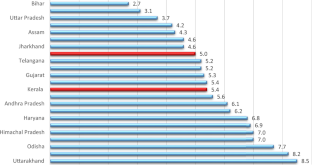
Source : SRS-Based Abridged Life Tables, 2015–2019

Source : Rajan and Zachariah 2019

Source : Report of the Technical Group on Population Projections, July 2020
Similar content being viewed by others
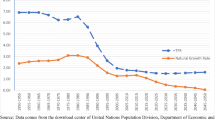
Trends, Determinants and the Implications of Population Aging in Iran
Nader Mehri, Mahmood Messkoub & Suzanne Kunkel

Population Aging in India: Facts, Issues, and Options


Age Structural Transition and Its Impact on Population Aging in India
Ajith Kumar N (2020) Exploring the drivers of long distance labour migration to Kerala. CSES Working Paper, 30. Retrieved from https://csesindia.org/wp-content/uploads/2021/04/WP-30-Exploring-Drivers-of-Long-Distance-Inter-State-Migration-in-Kerala-N-AJITH-KUMAR-.pdf
Basu AM (1986) Birth control by asset less workers in Kerala: the possibility of a poverty induced fertility transition. Dev Chang 17:265–282
Article Google Scholar
Bettio F, Paola V (1998) A Mediterranean perspective on the breakdown of the relationship between participation and fertility. Camb J Econ 22(2):137–171
Bhat MP (1987) Mortality in India: levels, trends, and patterns. A dissertation in demography. UMI, Ann Arbor
Google Scholar
Bhat MP (1995) Age misreporting and its impact on adult mortality estimates in South Asia. Demography India 24(1):59–80
Bhat PNM, Rajan IS (1990a) Demographic transition in Kerala revisited: determinants and consequences. Sage Publications, New Delhi
Bhat PNM, Rajan IS (1990) Demographic transition in Kerala revisited. Econ Polit Week 25(35–36):1957–1980
Billari FC, Kohler HP (2004) Patterns of low and lowest-low fertility in Europe. Popul Stud 58(2):161–176
Bloom DE, Williamson JG (1998) Demographic transitions and economic miracles in emerging Asia. World Bank Econ Rev 12(3):419–456
Caldwell J, Schindlmayr T (2003) Explanations of the fertility crisis in modern societies: a search for commonalities. Popul Stud 57(3):241–263
Central Intelligence Agency (No Date) The World Fact book. Country comparison- infant mortality rate . Retrieved from https://www.cia.gov/the-world-factbook/field/infant-mortality-rate/country-comparison/
Chakraborty A (2005) Kerala’s changing development narratives. Econ Pol Wkly 40(6):541–547
Chaurasia AR (2010) Mortality transition in India 1970–2005. Asian Popul Stud 6(1):47–68
Planning Commission (2005) Kerala development report. Academic Foundation, New Delhi
Dyson T, Moore M (1983) On kinship structure, female autonomy and demographic behaviour in India. Popul Dev Rev 9(1):35–60
Ghosh S (2019) Hindu-Muslim fertility differentials in India: District-level estimates from Census 2011. https://www.ideasforindia.in/topics/human-development/hindu-muslim-fertility-differentials-in-india-what-do-district-level-estimates-from-census-2011-tell-us.htmlArticles
Government of Kerala (2019) Economic review 2018 Volume 1, Kerala State Planning Board. Available at: https://spb.kerala.gov.in/sites/default/files/2020-09/ER_2019_Vol1_E.pdf
Hazra NC, Gulliford M (2017) Evolution of the “fourth stage” of epidemiologic transition in people aged 80 years and over: population-based cohort study using electronic health records. Popul Health Metrics 15:1–10. https://doi.org/10.1186/s12963-017-0136-2
Hazra NC, Dregan A, Jackson S, Gulliford MC (2015) Differences in health at Age 100 according to Sex: population-based cohort study of centenarians using electronic health records. J Am Geriat Soc 63:1331–1337. https://doi.org/10.1111/jgs.13484
Indian Council of Medical Research, Foundation PH, of India, Institute for Health Metrics and Evaluation (2017) India: Health of the Nation’s States: the india state-level disease burden initiative. New Delhi, India
James KS (1997) Can poverty determine fertility? Agricultural Labourers and their fertility Decisions. In: Zachariah KC, Irudaya Rajan S (eds) Kerala’s demographic transition: determinants and consequences. Sage Publication, New Delhi
James KS (1999) Fertility decline in Andhra Pradesh: a search for alternative hypotheses. Econ Pol Wkly 34(8):491–499
James KS (2008) Glorifying malthus: current debate on ‘demographic dividend’ in India. Econ Pol Wkly 43(25):63–69
James KS (2011) India’s demographic change: opportunities and challenges. Science 333:576–580
James KS, Goswami B (2012) Recent demographic changes in India with special reference to the Southern States. Artha Vijnana 54(3):357–371
Jeffrey R (2004) Legacies of matriliny: the place of women and the ‘Kerala model.’ Pac Aff 78:647–664
Jones GW (2007) Delayed Marriage and very low fertility in Pacific Asia. Popul Dev Rev 33(3):453–478
Jones GW, Gubhaju B (2009) Trends in marriage in the low fertility countries of East and Southeast Asia. Asian Popul Stud 5(3):237–265
Jones GW (2010). Changing marriage pattern in Asia. ARI Working Paper Series, 131. Asian Research Institute. Retrieved from https://ari.nus.edu.sg/wp-content/uploads/2018/10/201001-WPS-131.pdf .
Kannan KP (2005) Kerala’s turnaround in growth: Role of social development, remittances and reform. Econ Pol Wkly 40(5):548–554
Kannan KP, Hari KS (2002) Kerala’s Gulf connection: remittances and their macroeconomic impact. In: Zachariah KZ, Kannan KP, Irudaya Rajan S (eds) Kerala’s Gulf connection: CDS studies on international labour migration from Kerala State in India, Centre for Development Studies, Thiruvanathapuram
Kohler HP, Billari FC, José AO (2006) Low fertility in Europe: causes, implications and policy options. Retrieved from http://citeseerx.ist.psu.edu/viewdoc/download?doi=10.1.1.357.4258&rep=rep1&type=pdf
Krishnan TN (1976) Demographic transition in Kerala: facts and factors. Econ Pol Wkly 11(31–33):1203–1224
Kumar U (2010) India’s demographic transition: boon or bane? A state-level perspective. https://www.conference-board.org/pdf_free/workingpapers/EPWP1003.pdf
Leete R (1994) The continuing flight from marriage and parenthood among the overseas Chinese in East and Southeast Asia: dimensions and implications. Popul Dev Rev 20(4):811–829
Lesthaeghe R (1983) A century of demographic and cultural change in Western Europe. Popul Dev Rev 9(3):411–435
Lesthaeghe R (2010) The unfolding story of the second demographic transition. Popul Dev Rev 36(2):211–251
Lesthaeghe R (2014) The second demographic transition: a concise overview of its development. https://www.pnas.org/content/pnas/111/51/18112.full.pdf
Mencher JP (1980) The lessons and non-lessons of Kerala: agricultural labourers and poverty. Econ Pol Wkly 15(41–43):1781–1802
Mishra US, Rajan SI (2018) Internal migration. Thematic Paper 2. International Labour Organisation. Retrieved from https://lawsdocbox.com/Immigration/93340016-Internal-migration-udaya-s-mishra-s-irudaya-rajan.html
Nair GPR (1974) Decline in birth rate in Kerala: a hypothesis about the inter-relationship between demographic variables, health services and education. Econ Pol Wkly 9:323–336
Nair PS (2010) Understanding below-replacement fertility in Kerala. India. J Health Popul Nutrit 28(4):405–412
Narayana D, Venkiteswaran CS (2013) Domestic migrant labour in Kerala. Gulati Institution of Finance and Taxation. Retrieved from Chrome extension://efaidnbmnnnibpcajpcglclefindmkaj/viewer.html?pdfurl=http%3A%2F%2Flc.kerala.gov.in%2Fimages%2FCurrent%2Fismstudy.pdf&clen=10332131&chunk=true
Notestein F (1945) Population: the long view. In: Shultz T (ed) Food for the world. University of Chicago Press, Chicago, pp 36–57
Sample registration System Statistical Report (2020) Office of the Registrar General and Census Commissioner, India. Ministry of Home Affairs. Govenment of India. New Delhi
Olshansky A, Ault AB (1986) The fourth stage of epidemiological transition: the age of delayed degenerative diseases. Milbank Q 64(3):355–391. https://doi.org/10.2307/3350025
Omran AR (1971) The epidemiological transition: a theory of epidemiology of population change. Milbank Q 49(4):509–538. https://doi.org/10.2307/3349375
Omran AR (1983) The epidemiologic transition theory. A preliminary update. J Trop Pediatr 29:305–316
Paul KS, Singh J (2017) Emerging trends and patterns of self-reported morbidity in India: evidence from three rounds of national sample survey. J Health Popul Nutrit. https://doi.org/10.1186/s41043-017-0109-x
Peter B, Narendran V (2017) Gods own workforce: unravelling labour migration to Kerala, Perumbavoor: Centre for Migration and Inclusive Development, Retrieved from http://cmid.org.in/wp-content/uploads/2012/10/Gods-Own-Workforce-CMID-Web.pdf
Rajan SI (2015) Kerala: pointers to a negative growth rate. Frontline 32(19):17–19
Rajan SI, James KS (2007) Demographic transition and economic development in Kerala: The role of emigration. Project Report submitted as part of the MIR Study to the South Asia Network of Economic Initiatives. Retrieved from http://saneinetwork.net/Files/3.pdf
Rajan SI, Zachariah KC (2019) Emigration and remittances: New evidences from the Kerala migration survey, 2018. Retrieved from file:///C:/Users/user/Downloads/A201913112417_29%20(1).pdf
Rajan IS, Peter B, Mishra US, Narendran V (2018) Impact of mortality and fertility transitions in Kerala on migration and its implications for the State’s Economy. Policy Brief. Retrieved from http://www.shram.org/uploadFiles/20180604120008.pdf .
Ratcliffe J (1977) Social justice and demographic transition: lessons from India’s Kerala state. Int J Health Serv 8(1):123–144
Retherford RD, Ogawa N, Matusukara R (2001) Late marriage and less marriage in Japan. Popul Dev Rev 27(1):65–102
Saikia N, Jasilionis D, Ram F, Vladimir MS (2011) Trends and geographic differentials in mortality under age 60 in India. Popul Stud. 65(1):73–89
Saikia N, Jasilionis D, Ram F, Vladimir MS (2010) Estimates of Mortality under Age 60 in India and its States, 1970–2004, MPIDR Technical Report TR-2010–006. Rostock: Max Planck Institute for Demographic Research. Retrieved from http://www.demogr.mpg.de/papers/technicalreports/tr-2010-006.pdf
Schultz TP (1981) Economics of population. Addison-Wesley, Massachusetts
Sekher TV, Raju KNM, Sivakumar MN (2001) Fertility transition in Karnataka: levels, trends and implications. Econ Pol Wkly 36(51):4742–4752
Surabhi, KS, Kumar NA (2007) Labour migration to Kerala: a study of tamil migrant labourers in Kochi (Working Paper No.16). Kochi: Centre for Socio-economic & Environmental Studies, Kochi
Surabhi KS, Ajithkumar N (2007) Labour migration to Kerala: a study of Tamil labour migrants in Kochi. CSES Working paper no. 16. Available at: https://csesindia.org/wp-content/uploads/2020/08/LABOURMIGRATION-TO-KERALA-A-STUDY-OF-TAMIL-MIGRANT-LABOURERS-IN-KOCHI-1.pdf
Surkyn J, Lesthaeghe R (2004) Value orientations and the second demographic transition (SDT) in Northern, Western and Southern Europe: an update. Demogr Res Spec Collect 3:45–86
Thomas B, James KS (2014) Changes in mortality and human longevity in Kerala: are they leading to the advanced stage? Retrieved from http://www.globalhealthaction.net/index.php/gha/article/viewFile/22938/pdf_1
United Nations (2017) World population ageing. UNDESA, New York
Van De Kaa DJ (1987) Europe’s second demographic transition. Popul Bull 42(1):1–59
Van De Kaa DJ (2002) The idea of a second demographic transition in industrialized countries. Paper presented at the Sixth Welfare Policy Seminar of the National Institute of Population and Social Security, Tokyo, Japan, 29 January 2002. Retrieved from https://www.researchgate.net/publication/253714045_The_Idea_of_a_Second_Demographic Transition_in_Industrialized_Countries
Westley SB, Choe MK, Retherford RD (2010). Very low fertility in Asia: is there a problem? Can it be solved? Retrieved from https://www.files.ethz.ch/isn/115728/api094.pdf
Zachariah KC, Irudaya Rajan S (eds) (1997) Kerala’s demographic transition: determinants and consequences. Sage Publications, New Delhi
Zachariah KC, Rajan SI, Sarma PS, Navaneetham K, Nair PSG, Mishra US (1994) Demographic transition in Kerala in the 1980s. Centre for Development Studies, Trivandrum
Zachariah KC, Mathew ET, Rajan SI (2003) Dynamics of migration in Kerala: dimensions, differentials and consequences. Orient Longman Private Limited, Hyderabad
Zachariah KC (1984) The anomaly of the fertility decline in India’s Kerala State: a field investigation. Staff Working Paper, 700, World Bank, Washington D.C.
Download references
Acknowledgements
The author is sincerely thankful to Dr. N. Ajith Kumar, Director, CSES, for his valuable insights on the previous drafts of the paper. She also appreciates the efforts of Ms. Swathy Mohanan in compiling the statistical data and Dr. Parvathy Sunaina for her initial observations.
The author did not receive any external funding from any organisation to undertake the study.
Author information
Authors and affiliations.
Adjunct Faculty, Centre for Socio-Economic and Environmental Studies, Khadi Federation Building, NH By-Pass, Padivattom, Kochi, Kerala, 682024, India
Baishali Goswami
Co-Founder of Centre for Migration and Inclusive Development, XX/1229, Near Town Hall, Perumbavoor, Kerala, 683542, India
You can also search for this author in PubMed Google Scholar
Corresponding author
Correspondence to Baishali Goswami .
Ethics declarations
Conflict of interest.
There in no conflict of interest.
Additional information
Publisher's note.
Springer Nature remains neutral with regard to jurisdictional claims in published maps and institutional affiliations.
Rights and permissions
Springer Nature or its licensor (e.g. a society or other partner) holds exclusive rights to this article under a publishing agreement with the author(s) or other rightsholder(s); author self-archiving of the accepted manuscript version of this article is solely governed by the terms of such publishing agreement and applicable law.
Reprints and permissions
About this article
Goswami, B. Understanding the demographic changes in Kerala: an exploration. J. Soc. Econ. Dev. 26 , 102–121 (2024). https://doi.org/10.1007/s40847-023-00262-z
Download citation
Accepted : 15 June 2023
Published : 01 August 2023
Issue Date : April 2024
DOI : https://doi.org/10.1007/s40847-023-00262-z
Share this article
Anyone you share the following link with will be able to read this content:
Sorry, a shareable link is not currently available for this article.
Provided by the Springer Nature SharedIt content-sharing initiative
- Demographic transition
- Second demographic transition
- Find a journal
- Publish with us
- Track your research
Kerala State Climate Change Knowledge Portal
Supported by NMSKCC Dept. of Science and Technology
A study of the fertility and carbon sequestration potential of rice soil with respect to the application of biochar and selected amendments
Impact of climate change on food and plantation crops in the humid tropics of india, rainfall trends in twentieth century over kerala, india, applications of geographic information systems, remote-sensing, and a landscape ecology approach to biodiversity conservation in the western ghats, coastal environment and biodiversity conservation in kerala in the context of climate change, implications of institutional vacuum in wetland conservation for water management, managing water for sustainable development: an economist’s perspective, soil carbon alterations of selected forest types as an environmental feedback to climate change.
Academia.edu no longer supports Internet Explorer.
To browse Academia.edu and the wider internet faster and more securely, please take a few seconds to upgrade your browser .
- We're Hiring!
- Help Center
Kerala Tourism
- Most Cited Papers
- Most Downloaded Papers
- Newest Papers
- Save to Library
- Honeymoon Tourism Follow Following
- India Tourism Follow Following
- Tourism in kerala Follow Following
- Kerala backwaters Follow Following
- Holidays Follow Following
- Health Tourism Follow Following
- Traditional Kerala Architecture Follow Following
- Tamil Literature Follow Following
- Tibetan History Follow Following
- Celtic Linguistics Follow Following
Enter the email address you signed up with and we'll email you a reset link.
- Academia.edu Publishing
- We're Hiring!
- Help Center
- Find new research papers in:
- Health Sciences
- Earth Sciences
- Cognitive Science
- Mathematics
- Computer Science
- Academia ©2024
You are using an outdated browser. Please upgrade your browser to improve your experience and security.
Monday, 15 April 2024

Agenda - The Sunday magazine
- Cover Story
In Kerala literary awards are reserved for comrades
When there are mafias specialized in smuggling of gold and narcotics, sand, sex, private schools and colleges, liquor, hospital and land can literature lag behind? The literary award mafias in Kerala have their tentacles over the selection committees that decide the winners of the State-controlled Kerala Sahitya Akademy and Ezhuthachan Award Committee (the highest award in Malayalam) .
Literary lovers were perplexed when this year’s “Vilasini” Award was conferred on P K Pokker, a self-styled postmodernist writer who is a hardcore CPI(M) activist. “Though he has authored more than a dozen books on literary criticism ,nobody in the field of criticism has bothered to touch these books with the barge of a pole. To put it briefly, all his works belong to the genre known as trash,” C K Anandan Pillai, chief editor, Sahitya Vimarsam, told The Pioneer.
Pokker was awarded the Vilasini Prize by the Kerala Sahitya Akademy in violation of all guidelines specified for this prestigious honor. The award was instituted by Vilasini (the pen name of one of the all time greats of Malayalam literature, M K Menon) with the intention of honoring authors who undertake comprehensive study on novels published in Malayalam. Menon is the author of many classic novels including The Inheritors, the longest novel ever written in India.
When he came to know that there were no writers specializing in studies of novels in Malayalam, Menon, a journalist-turned-novelist set apart a corpus fund and instituted an award to encourage those who take up serious studies in Malayalam novels. He had set three conditions while instituting the award. The honor should be named after O Chandu Menon, Malayalam language’s first ever novelist and his name should not find mention anywhere in this connection. Menon also put a stringent condition that collection of articles should not be considered for this award. “This was to encourage serious study on a particular novel which would elevate the status of such novels to global standards. What the Sahitya Akadeny Award jury has done is to throw the guidelines into trash bin and select a fourth grade book full of grammatical mistakes and literary aberrations,” wrote noted critic A B Raghunathan Nair in a research paper published in Sahitya Vimarsam.
Nair has pointed out hundreds of such mistakes in Pokker’s book “Blue Light of Creativity,” a collection of essays on the literary works of Vaikkom Muhammed Basheer. There are so many factual as well as grammatical errors in Pokker’s work. The basic requirement to be considered for the prize is that it should be a comprehensive study on the novel.
What Pokker has done is to write some articles and got it published as a collection,” writes Nair.
Trending News

US President Biden condemns Iran's attack on Israel; to convene convene G-7 leaders' meeting on response
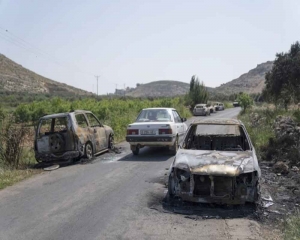
Israel find the body of boy whose disappearance sparked a settler attack in the West Bank

Iran's Revolutionary Guard seizes a container ship near Strait of Hormuz amid tensions with Israel

5 people and a suspect killed in a Sydney shopping center stabbing attack, police say

CSK Vs MI: MS Dhoni in spotlight as CSK and MI resume rivalry in new era

PM Modi interacts with country's top gamers

Akshay and Tiger's 'Bade Miyan Chote Miyan' mints Rs 36.33 crore globally on day one
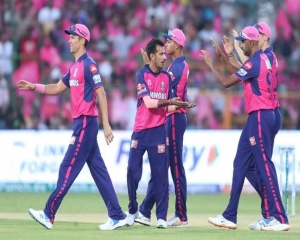
RR Vs PBKS: Rajasthan Royals need better execution of plans against Punjab Kings
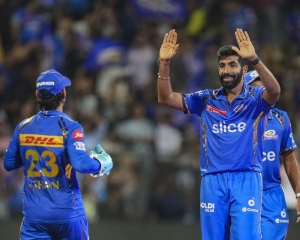
MI Vs RCB: There is no ego in T20 format, it's important to bowl slower balls says Bumrah

Atletico Madrid beats Dortmund 2-1 at home in first leg of Champions League quarterfinals
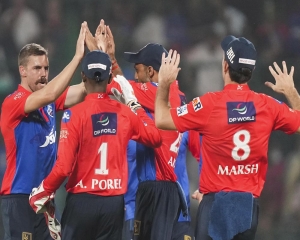
DC Vs LSG: Faltering DC eye improvement; LSG look to keep winning juggernaut rolling
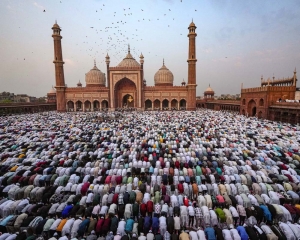
Eid-ul-Fitr celebrated across Delhi
State editions, erstwhile royals of up lose sheen in electoral politics, yogi pays visit to gorakhnath cave, yogi calls congressmen ‘impersonators’ slams grand old party for shifting stance on lord ram, mayawati assures separate statehood to western up if voted to power, bjp manifesto embodies country’s ambition: yogi, motivate voters for ethical voting: chief electoral officer, sunday edition, astroturf | reinvent yourself during navaratra, a day awaited for five centuries, navratri | a festival of tradition, innovation, and wellness, spiritual food, healthier shift in navratri cuisine, shubho nobo borsho, e-mail this link to a friend..


IMAGES
VIDEO
COMMENTS
Explore the latest full-text research PDFs, articles, conference papers, preprints and more on KERALA. Find methods information, sources, references or conduct a literature review on KERALA
As such it subjects the development experience of Kerala for a period of six decades from 1960 to 2020. This exercise reveals that the development experience of Kerala is largely shaped by its historical past which privileged social development over purely economic development based on the growth of the goods producing sectors.
Ethical issue: Review paper do not need approval code. Results Theme 1: increasing burden of non-communicable diseases and chronic morbidity. Various records and experts have discussed the issue of high morbidity and low mortality in Kerala state and the long-term effects and complications associated with this [5, 6, 11, 19, 20] The prevention of communicable diseases and NCDs was one of the ...
As per Census 2011, Kerala accounted for 2.76 per cent of the population of India and occupied the 12th position among states. Following an early onset of mortality transition, Kerala registered a higher growth rate in population than the country average till 1971 (Table 1).However, with the onset of the declining trend in fertility in the state, an eventual decline in population growth rate ...
Self-help groups in empowering women: A case study of selected SHGs and NHGs (Discussion Paper No. 38). Kerala Research Programme on Local Level Development, Centre for Development Studies. ... Evidence from self-help groups in rural India (Policy Research Working Paper No. 6547). The World Bank Development Economics Vice Presidency ...
Tripathi H. (2017) 'Correlation between Education and Health Care in Kerala: A District Level Analysis'. Unpublished paper, presented in a National Seminar on 'Health and Poverty' in the Postgraduate Department of Economics, NMSM Government College, Kalpetta, Wayanad, Kerala on 28-29 November 2017.
RESEARCH ISSUE. Unequal levels of economic growth and development among distinct social groups in Kerala are the result of marked imbalances in the ownership and control of productive assets such as land. Aside from landlessness, we must point to the existence of high levels of illiteracy, lack of occupational mobility and poor health indicators.
Kerala is a narrow strip of land beside one of the greatest escarpments of India—the Western Ghats, where the rivers are comparatively shorter and younger. ... The morphometric analytical data obtained from twenty five research papers are compiled and the logarithmic plot of stream number versus stream order, basin area versus stream number ...
Academia.edu is a platform for academics to share research papers. ORGANIC FARMING IN KERALA: AN ASSESSMENT OF ADOPTION, SUSTAINABILITY AND CONSTRAINTS ... The findings of the study are that organic farming is environmentally sustainable and have large scope in India The paper focus on the understanding of the prospects and challenges of ...
IJCRT2306113 International Journal of Creative Research Thoughts (IJCRT) www.ijcrt.org a984 Both books offer a look into the past and emphasise Kerala's evolution over time. Since the times portrayed in these novels, Kerala has experienced significant changes in its sociocultural heritage, economy, and political landscape.
The state of Kerala, located on the west coast of India, experienced a record 100-year flood that resulted in major landslides from unprecedented prolonged and extremely heavy rainfall (50-480 mm·day −1) during August 1-19, 2018, causing extensive damage and about 500 causalities.Rainfall observations indicate that the heavy rainfall occurred over two spells (August 7-10 and 14-18 ...
The authors have been conducting experimental investigations to analyze the passive control methods of Kerala traditional buildings [Dili A. S. et al, 2009, 5 papers]. The internal courtyard provided in such traditional buildings is found to have a prime role in providing the required air movement through the building.
International Journal of Science and Research (IJSR) ISSN: 2319-7064 SJIF (2022): 7.942 Volume 12 Issue 1, January 2023 www.ijsr.net Licensed Under Creative Commons Attribution CC BY Public Health Care in Kerala: An Analysis of Public Opinion Lt. Rajy Ramakrishnan1, Dr. 2Preemy P Thachil 1Research Scholar, SreeSankara College, Kalady, Kerala, India
Journal of Research in Business and Management Volume 10 ~ Issue 8 (2022) pp: 42-51 ISSN(Online):2347-3002 www.questjournals.org *Corresponding Author: Praveen. M.V 42 | Page Research Paper Kerala Urban Road Transport Corporation (KURTC):A
Specifically, the objective of this research is: 1) to identify variations of typology of court-yard-house in Kerala, and to learn general architectonic characters of each type; and 2) to explore common principles of Southeast Asian architectures in the typology of Kerala courtyard-houses.
Studies, 2002). Kerala is one of the states in India which has highest number of schools for both girls and boys. Therefore education for both boys and girls have been evenly emphasised by the society in Kerala.Kerala has been able to achieve gender equity in education to a large extent. Nearly half of the students in lower primary classes are ...
Manchadikkari, an island in the village Arpookkara of Kottayam district in Kerala, has a complex history of Dalit negotiations dating to the beginning of the twentieth century. ... This paper analyses the play Azhakante Kutil ... 3 This research is approved by the Institutional Ethics Committee, Indian Institute of Technology, Kanpur. The ...
Research Papers. Home; ... Kottayam-4, Kerala Tel number: 8848576717 E-mail: [email protected] : Categories. Articles; ICCS Events; Latest News; Research Projects; Scroll News; Important Links. About; Home; Work with Us; Recent Post. Recruitment of Scientist-B 2024; Rank List of SRF & JRF for the interview on 03/02/2024;
Kerala Tourism products and current tourist traffic pattern. Kerala's principal tourism products fall into six categories: (1) heritage/cultural/religious sites & events, (2) backwaters, (3) beaches, (4) hill stations, (5) wild life sanctuaries and (6) Ayurveda, with the common cord of green... more. Download. by Pramod Devaraj.
The literary award mafias in Kerala have their tentacles over the selection committees that decide the winners of the State-controlled Kerala Sahitya Akademy and Ezhuthachan Award Committee (the ...